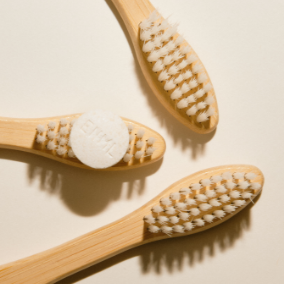Cavities, also known as tooth decay or dental caries, are among the most common dental issues people face, impacting nearly everyone at some point. Understanding precisely what causes cavities, their progression, and how to prevent them can help you maintain a healthy, pain-free smile.
What Exactly Is a Cavity?
A cavity is a hole in your tooth caused by tooth decay. At first, cavities might appear as small white spots that you may overlook. Left untreated, these spots can develop into larger holes and eventually cause significant pain and infection.
How Cavities Form: A Step-by-Step Guide
Step 1: Plaque Formation
Every mouth is home to billions of bacteria. After you eat or drink sugary or starchy foods, these bacteria feed on leftover sugars and produce acids.
Step 2: Acid Attacks on Enamel
The acids produced by bacteria attack your tooth’s enamel—the hard, protective outer layer—slowly breaking it down. Frequent exposure to sugar or starches keeps this acid attack going, significantly increasing your risk for cavities.
Step 3: Decay Progresses to Dentin
Once enamel wears away, decay reaches the softer dentin underneath, causing cavities to grow faster. At this stage, you might experience increased tooth sensitivity, particularly to hot, cold, or sweet foods and drinks.
Step 4: Decay Reaches the Pulp
If untreated, decay eventually reaches the tooth pulp, the innermost layer containing nerves and blood vessels. This often results in severe tooth pain, swelling, and infection.
Common Causes and Risk Factors for Cavities
Several factors contribute to cavities, including:
- Poor Oral Hygiene: Not regularly brushing and flossing allows plaque and bacteria to remain on your teeth, greatly increasing your cavity risk.
- Sugary and Starchy Foods: Frequent snacking or sipping sugary drinks throughout the day provides continuous fuel for cavity-causing bacteria.
- Dry Mouth: Saliva naturally helps neutralize acids and wash away food particles. Conditions or medications that reduce saliva production make teeth more vulnerable.
- Genetics: Some people are genetically predisposed to weaker enamel, making them more prone to cavities.
- Tooth Location and Shape: Back teeth (molars and premolars) or teeth with deep crevices are harder to clean, making them prime spots for decay.
- Worn Dental Work: Old fillings or dental crowns that have become compromised can allow bacteria to enter and start new cavities underneath.
Recognizing Symptoms of Cavities
Symptoms may not be noticeable at first but become clearer as decay progresses:
- Tooth sensitivity to hot, cold, or sweet foods
- Visible holes or pits in your teeth
- Brown, black, or white staining on teeth
- Toothache or sharp pain when biting
- Bad breath or a persistent unpleasant taste
How Dentists Diagnose Cavities
Dentists typically detect cavities through:
- Visual examinations and probing teeth
- Dental X-rays to spot hidden decay between teeth or beneath fillings
Regular dental check-ups every six months help catch cavities early, making treatment simpler and less invasive.
Effective Treatments for Cavities
Treatments depend on how advanced the cavity is:
- Early Stage (Demineralization): Fluoride treatments or hydroxyapatite gels can help restore enamel, potentially reversing decay.
- Moderate Decay: Dentists remove decay and fill the tooth with materials such as composite resin or silver amalgam.
- Severe Decay: When decay has reached deep into the tooth, root canal therapy or even tooth extraction may be necessary.
Preventing Cavities: Practical Tips
Prevention is essential and achievable with these proven steps:
- Brush Properly and Regularly: Use fluoride toothpaste and brush twice a day for at least two minutes.
- Floss Daily: Clean between teeth where your toothbrush can't reach.
- Limit Sugar and Acid Intake: Reduce sugary and starchy foods, especially between meals. If consuming sweets, eat them with meals instead of snacking throughout the day.
- Stay Hydrated: Drink plenty of water, especially fluoridated water, to maintain saliva production.
- Regular Dental Visits: Schedule dental check-ups and cleanings every six months.
- Use Dental Sealants: Sealants applied to the grooves in your back teeth can significantly reduce decay risks, especially for children and teens.
Final Thoughts
Understanding what causes cavities empowers you to take effective steps to prevent tooth decay. By practicing good oral hygiene, controlling your diet, and scheduling regular dental visits, you can significantly reduce your risk of cavities and enjoy healthier teeth for life.






